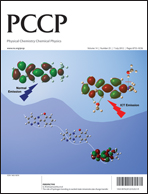The excited-state deuteron transfer (ESDT) of deuterated 7-hydroxyquinoline (7DQ) along a heterogeneous hydrogen (H)-bonded chain composed of two deuterated alcohol (ROD) molecules having different acidities, as a model system of a proton wire consisting of diverse amino acids, has been investigated. To understand dynamic differences between deuteron transfer and proton transfer, solvent-inventory experiments have been performed with variation of the combination as well as the composition of alcohols in a H-bonded mixed-alcohol chain. Deuteron transfer from the adjacent ROD molecule to the basic imino group of 7DQ via tunneling, which is the rate-determining step, initiates ESDT, and subsequent barrierless deuteron relay from the acidic enolic group of 7DQ to the alkoxide moiety along the H-bonded chain completes ESDT. Whereas the acceleration of the reaction has been observed in excited-state proton transfer because of the accumulated proton-donating abilities of two alcohol molecules in a H-bonded chain by a push-ahead effect, such acceleration is not observed in ESDT. Because the energy barrier of deuteron relay is much higher than that of proton relay due to the low zero-point energy of 7DQ·(ROD)2 and a deuteron is twice as heavy as a proton, it is hard for a deuteron to pass through the barrier via tunneling. Moreover, both the H-bonding ability and the acidity of ROD molecules are so weak that their deuteron-donating abilities cannot be accumulated at the rate-determining step of ESDT. Consequently, the rate constant of ESDT is determined mostly by the acidity of the ROD molecule H-bonded directly to the imino group of 7DQ.

You have access to this article
 Please wait while we load your content...
Something went wrong. Try again?
Please wait while we load your content...
Something went wrong. Try again?


 Please wait while we load your content...
Please wait while we load your content...